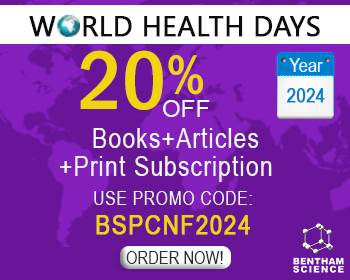Abstract
The radiation for therapeutic purposes has shown positive effects in different contexts; however, it can increase the risk of many age-related and neurodegenerative diseases such as Alzheimer’s disease (AD), amyotrophic lateral sclerosis (ALS), Huntington’s disease (HD), and Parkinson’s disease (PD). These different outcomes highlight a dose-response phenomenon called hormesis. Prevailing studies indicate that high doses of radiation could play several destructive roles in triggering oxidative stress, neuroapoptosis, and neuroinflammation in neurodegeneration. However, there is a lack of effective treatments in combating radiation-induced neurodegeneration, and the present drugs suffer from some drawbacks, including side effects and drug resistance. Among natural entities, polyphenols are suggested as multi-target agents affecting the dysregulated pathogenic mechanisms in neurodegenerative disease. This review discusses the destructive effects of radiation on the induction of neurodegenerative diseases by dysregulating oxidative stress, apoptosis, and inflammation. We also describe the promising effects of polyphenols and other candidate phytochemicals in preventing and treating radiation-induced neurodegenerative disorders, aiming to find novel/potential therapeutic compounds against such disorders.
Keywords: Neurodegeneration, polyphenols, phytochemicals, radiation, oxidative stress, inflammation, apoptosis.
[PMID: 33842082]
[http://dx.doi.org/10.1016/j.neuro.2015.10.009] [PMID: 26511840]
[http://dx.doi.org/10.1523/JNEUROSCI.17-13-05089.1997] [PMID: 9185546]
[http://dx.doi.org/10.1016/j.arr.2018.11.002] [PMID: 30458244]
[PMID: 26000171]
[http://dx.doi.org/10.1016/j.freeradbiomed.2009.08.016] [PMID: 19703553]
[http://dx.doi.org/10.1080/14786419.2018.1457663] [PMID: 29607691]
[http://dx.doi.org/10.1007/s13277-010-0042-8] [PMID: 20490962]
[http://dx.doi.org/10.3109/09553002.2014.934929] [PMID: 24937368]
[http://dx.doi.org/10.3389/fonc.2012.00073] [PMID: 22833841]
[http://dx.doi.org/10.1093/neuonc/nos196] [PMID: 23095829]
[http://dx.doi.org/10.1038/srep09343] [PMID: 25791775]
[http://dx.doi.org/10.3109/09553002.2012.711504] [PMID: 22788526]
[http://dx.doi.org/10.1016/j.phymed.2020.153170] [PMID: 31980299]
[http://dx.doi.org/10.1016/j.phrs.2020.105069] [PMID: 32652198]
[http://dx.doi.org/10.1186/s12967-017-1338-x] [PMID: 29121966]
[http://dx.doi.org/10.1155/2018/2767208] [PMID: 30598683]
[http://dx.doi.org/10.1016/bs.irn.2020.03.024] [PMID: 32854857]
[http://dx.doi.org/10.1016/j.arr.2007.07.001] [PMID: 17768095]
[http://dx.doi.org/10.1177/1559325815592606] [PMID: 26674066]
[http://dx.doi.org/10.1016/j.neuropharm.2008.02.017] [PMID: 18402985]
[http://dx.doi.org/10.1016/j.taap.2007.02.015] [PMID: 17459441]
[http://dx.doi.org/10.1016/j.advenzreg.2003.11.013] [PMID: 15581500]
[http://dx.doi.org/10.1111/j.1471-4159.2006.04411.x] [PMID: 17250676]
[http://dx.doi.org/10.1089/ars.2009.3074] [PMID: 20446769]
[http://dx.doi.org/10.1016/j.arr.2021.101273] [PMID: 33571705]
[http://dx.doi.org/10.3390/antiox9090824] [PMID: 32899274]
[http://dx.doi.org/10.1016/0891-5849(95)02095-0] [PMID: 8720910]
[PMID: 6214164]
[http://dx.doi.org/10.1667/RR3112] [PMID: 14680400]
[http://dx.doi.org/10.1667/0033-7587(2003)159[0283:SARIAO]2.0.CO;2] [PMID: 12600231]
[http://dx.doi.org/10.3892/ijo.16.2.413] [PMID: 10639586]
[http://dx.doi.org/10.1667/0033-7587(2001)156[0657:IOGEAA]2.0.CO;2] [PMID: 11604088]
[http://dx.doi.org/10.1006/bbrc.2001.4348] [PMID: 11181043]
[http://dx.doi.org/10.1039/C1PP05204G] [PMID: 21986918]
[http://dx.doi.org/10.3109/15368378.2012.699012] [PMID: 23301880]
[http://dx.doi.org/10.1002/mc.10122] [PMID: 12766906]
[http://dx.doi.org/10.1111/bjd.12207] [PMID: 23786615]
[http://dx.doi.org/10.1080/09553000110069335] [PMID: 11682006]
[http://dx.doi.org/10.1074/jbc.M004517200] [PMID: 11278277]
[http://dx.doi.org/10.1080/09553000410001692726] [PMID: 15204702]
[http://dx.doi.org/10.1186/1476-511X-13-142] [PMID: 25182732]
[http://dx.doi.org/10.1096/fj.13-239418] [PMID: 24334706]
[http://dx.doi.org/10.1023/B:CANC.0000031769.14728.bc] [PMID: 15197331]
[http://dx.doi.org/10.1038/ncomms6464] [PMID: 25394724]
[http://dx.doi.org/10.1667/RR14587.1]
[http://dx.doi.org/10.1016/j.brainres.2009.10.062] [PMID: 19879861]
[http://dx.doi.org/10.1667/RR13799.1] [PMID: 25706776]
[http://dx.doi.org/10.1371/journal.pone.0006377] [PMID: 19633716]
[http://dx.doi.org/10.1016/1043-2760(94)90106-6] [PMID: 18407234]
[http://dx.doi.org/10.1038/nature05292] [PMID: 17051205]
[http://dx.doi.org/10.1155/2019/2105607]
[http://dx.doi.org/10.1016/j.biopha.2015.07.025] [PMID: 26349970]
[http://dx.doi.org/10.2174/18715273113129990072] [PMID: 23469836]
[http://dx.doi.org/10.1093/jrr/rrs036] [PMID: 22872779]
[http://dx.doi.org/10.1517/13543784.16.12.1921] [PMID: 18042001]
[http://dx.doi.org/10.1016/j.mehy.2020.109726] [PMID: 32361669]
[http://dx.doi.org/10.1155/2017/2525967]
[http://dx.doi.org/10.1212/WNL.47.6.1594] [PMID: 8960756]
[http://dx.doi.org/10.1016/j.freeradbiomed.2007.09.007] [PMID: 18037122]
[http://dx.doi.org/10.1371/journal.pone.0053275] [PMID: 23300905]
[http://dx.doi.org/10.1111/jnc.12769] [PMID: 24861936]
[http://dx.doi.org/10.3233/JPD-130230] [PMID: 24252804]
[http://dx.doi.org/10.1186/1478-811X-11-34] [PMID: 23683503]
[http://dx.doi.org/10.3389/fnagi.2018.00134] [PMID: 29867445]
[http://dx.doi.org/10.1089/ars.2012.5134] [PMID: 23802883]
[http://dx.doi.org/10.1007/s00411-012-0436-7] [PMID: 23100112]
[http://dx.doi.org/10.1155/2019/3010342] [PMID: 31781332]
[http://dx.doi.org/10.1038/srep42885] [PMID: 28220892]
[http://dx.doi.org/10.1016/j.pneurobio.2011.11.008] [PMID: 22137045]
[http://dx.doi.org/10.1038/ng1934] [PMID: 17192785]
[http://dx.doi.org/10.1038/ng.803] [PMID: 21460840]
[http://dx.doi.org/10.1038/ng.801] [PMID: 21460841]
[http://dx.doi.org/10.1016/j.neuro.2008.12.012] [PMID: 19162068]
[http://dx.doi.org/10.1093/brain/awr133] [PMID: 21672962]
[http://dx.doi.org/10.1016/j.jns.2006.03.006] [PMID: 16674979]
[http://dx.doi.org/10.1093/brain/awt097] [PMID: 23687121]
[http://dx.doi.org/10.1021/acs.analchem.8b04273] [PMID: 30571081]
[http://dx.doi.org/10.31661/jbpe.v8i2.919] [PMID: 29951441]
[http://dx.doi.org/10.1054/bjoc.2001.2100] [PMID: 11720454]
[http://dx.doi.org/10.1016/j.bbrc.2011.10.006] [PMID: 22005465]
[http://dx.doi.org/10.1080/09553002.2018.1492755] [PMID: 29939076]
[http://dx.doi.org/10.1016/S0360-3016(02)04618-7] [PMID: 12654446]
[http://dx.doi.org/10.1111/j.1349-7006.2000.tb00906.x] [PMID: 11092988]
[http://dx.doi.org/10.1021/acs.jproteome.7b00536] [PMID: 28849662]
[http://dx.doi.org/10.1155/2013/123241]
[http://dx.doi.org/10.1016/j.ajpath.2010.10.003] [PMID: 21281796]
[http://dx.doi.org/10.1080/09553002.2018.1431699] [PMID: 29359989]
[http://dx.doi.org/10.1016/j.ijrobp.2004.11.010] [PMID: 15752897]
[http://dx.doi.org/10.1038/sj.cdd.4400929] [PMID: 11803373]
[http://dx.doi.org/10.1002/(SICI)1097-4695(199912)41:4<549:AID-NEU10>3.0.CO;2-G] [PMID: 10590178]
[http://dx.doi.org/10.2174/1568009043481704] [PMID: 14965266]
[http://dx.doi.org/10.1074/jbc.272.52.33056] [PMID: 9407088]
[http://dx.doi.org/10.1093/emboj/18.23.6845] [PMID: 10581258]
[http://dx.doi.org/10.1128/MCB.17.12.7220] [PMID: 9372954]
[http://dx.doi.org/10.1093/emboj/18.7.1805] [PMID: 10202144]
[http://dx.doi.org/10.1074/jbc.273.49.33048] [PMID: 9830059]
[http://dx.doi.org/10.2307/3578828] [PMID: 8073113]
[http://dx.doi.org/10.1016/j.canlet.2015.04.016] [PMID: 25911239]
[http://dx.doi.org/10.1007/s10495-013-0925-4] [PMID: 24158598]
[http://dx.doi.org/10.1007/s12094-017-1828-6] [PMID: 29318449]
[http://dx.doi.org/10.1080/09553002.2017.1304590] [PMID: 28281355]
[http://dx.doi.org/10.1038/sj.onc.1209414] [PMID: 16491125]
[http://dx.doi.org/10.1038/sj.onc.1205743] [PMID: 12185583]
[http://dx.doi.org/10.1080/09553000310001642876] [PMID: 14761849]
[http://dx.doi.org/10.1016/S0167-8140(98)00007-3] [PMID: 9681884]
[http://dx.doi.org/10.1046/j.0953-816x.2001.01581.x] [PMID: 11422444]
[http://dx.doi.org/10.1074/jbc.271.22.13169] [PMID: 8662781]
[http://dx.doi.org/10.1007/s12035-013-8425-7] [PMID: 23436141]
[http://dx.doi.org/10.1007/s00411-006-0076-x] [PMID: 17072632]
[http://dx.doi.org/10.1182/blood.V95.8.2645] [PMID: 10753846]
[PMID: 15964692]
[PMID: 12554854]
[http://dx.doi.org/10.1016/S0169-328X(02)00353-4] [PMID: 12225870]
[http://dx.doi.org/10.1074/jbc.M003425200] [PMID: 11029458]
[http://dx.doi.org/10.1007/s13277-012-0329-z] [PMID: 22322922]
[http://dx.doi.org/10.3892/ijo.29.3.643] [PMID: 16865280]
[http://dx.doi.org/10.1007/s10565-010-9172-4] [PMID: 20680428]
[http://dx.doi.org/10.1016/j.canlet.2015.03.021] [PMID: 25841996]
[http://dx.doi.org/10.1186/s12950-015-0058-3] [PMID: 25705130]
[http://dx.doi.org/10.3389/fphar.2018.01261] [PMID: 30524273]
[http://dx.doi.org/10.1667/RR3478.1] [PMID: 16435917]
[http://dx.doi.org/10.2174/1874467213666201230101811] [PMID: 33380311]
[http://dx.doi.org/10.1016/j.jneuroim.2006.11.017] [PMID: 17222916]
[http://dx.doi.org/10.1016/j.expneurol.2007.07.004] [PMID: 17720159]
[http://dx.doi.org/10.1155/2014/350516]
[http://dx.doi.org/10.1124/jpet.102.035048] [PMID: 12490568]
[http://dx.doi.org/10.1016/j.pneurobio.2013.10.004] [PMID: 24211851]
[http://dx.doi.org/10.1016/S0197-4580(00)00124-X] [PMID: 10858586]
[http://dx.doi.org/10.1155/2018/4784268] [PMID: 29850629]
[http://dx.doi.org/10.1212/WNL.38.8.1285] [PMID: 3399080]
[http://dx.doi.org/10.1016/S0925-4439(97)00070-7] [PMID: 9434102]
[PMID: 1383325]
[http://dx.doi.org/10.1523/JNEUROSCI.22-03-00782.2002] [PMID: 11826108]
[http://dx.doi.org/10.1006/exnr.2001.7688] [PMID: 11358437]
[http://dx.doi.org/10.1523/JNEUROSCI.22-05-01763.2002] [PMID: 11880505]
[http://dx.doi.org/10.1089/ars.2009.2460] [PMID: 19243239]
[http://dx.doi.org/10.1159/000332821] [PMID: 22156599]
[http://dx.doi.org/10.1186/s12974-018-1313-3] [PMID: 30249283]
[http://dx.doi.org/10.1371/journal.pone.0016038] [PMID: 21249202]
[http://dx.doi.org/10.1016/j.molcel.2009.02.013] [PMID: 19285945]
[http://dx.doi.org/10.1242/jcs.078303] [PMID: 21385841]
[http://dx.doi.org/10.1111/j.1471-4159.2009.05932.x] [PMID: 19166511]
[http://dx.doi.org/10.1016/j.toxlet.2016.11.002] [PMID: 27865851]
[http://dx.doi.org/10.3389/fncel.2018.00072] [PMID: 29618972]
[http://dx.doi.org/10.3389/fimmu.2018.00754] [PMID: 29706967]
[http://dx.doi.org/10.3389/fimmu.2018.01302] [PMID: 29951057]
[http://dx.doi.org/10.1371/journal.pone.0177680] [PMID: 28498852]
[http://dx.doi.org/10.1038/onc.2008.309] [PMID: 18955970]
[http://dx.doi.org/10.1089/ars.2007.1793] [PMID: 17854276]
[http://dx.doi.org/10.1002/mus.10191] [PMID: 12362410]
[http://dx.doi.org/10.1016/j.bbadis.2016.11.025] [PMID: 27902929]
[http://dx.doi.org/10.1002/neu.20086] [PMID: 15459896]
[http://dx.doi.org/10.1016/S0896-6273(02)00905-4] [PMID: 12354397]
[http://dx.doi.org/10.1111/febs.13520] [PMID: 26395133]
[http://dx.doi.org/10.1002/glia.22891] [PMID: 26200799]
[http://dx.doi.org/10.3390/ijms161126068] [PMID: 26610477]
[http://dx.doi.org/10.3389/fimmu.2017.00517] [PMID: 28529513]
[http://dx.doi.org/10.1016/j.tox.2012.06.011] [PMID: 22750629]
[http://dx.doi.org/10.1186/1475-2867-13-47] [PMID: 23688022]
[PMID: 25108669]
[http://dx.doi.org/10.1080/00207454.2020.1730833] [PMID: 32070174]
[http://dx.doi.org/10.3389/fbioe.2020.00238] [PMID: 32318551]
[http://dx.doi.org/10.1021/acs.jcim.1c00083] [PMID: 34014674]
[http://dx.doi.org/10.1155/2018/1972714] [PMID: 30402203]
[http://dx.doi.org/10.1007/s43440-020-00063-9] [PMID: 32128712]
[http://dx.doi.org/10.1016/j.semcancer.2020.02.007] [PMID: 32081639]
[http://dx.doi.org/10.3233/JAD-170351] [PMID: 28984591]
[http://dx.doi.org/10.1016/j.xphs.2017.11.014] [PMID: 29183742]
[http://dx.doi.org/10.22203/eCM.v033a21] [PMID: 28485773]
[http://dx.doi.org/10.1016/j.pbb.2014.08.005] [PMID: 25159739]
[http://dx.doi.org/10.1158/1535-7163.MCT-05-0293] [PMID: 16432161]
[http://dx.doi.org/10.5306/wjco.v7.i3.275] [PMID: 27298767]
[http://dx.doi.org/10.1007/s10565-016-9354-9] [PMID: 27473378]
[http://dx.doi.org/10.1016/j.ijrobp.2006.03.025] [PMID: 16751071]
[http://dx.doi.org/10.3233/JAD-170093] [PMID: 29036814]
[http://dx.doi.org/10.3390/geriatrics1040029] [PMID: 31022822]
[http://dx.doi.org/10.1016/j.toxlet.2017.10.021] [PMID: 29097221]
[http://dx.doi.org/10.1002/brb3.548] [PMID: 27781151]
[http://dx.doi.org/10.1016/j.biopha.2018.11.075] [PMID: 30551481]
[http://dx.doi.org/10.4161/oxim.2.5.9498] [PMID: 20716914]
[http://dx.doi.org/10.3390/ijms15045928] [PMID: 24722566]
[http://dx.doi.org/10.3233/JAD-170308] [PMID: 28671130]
[http://dx.doi.org/10.3389/fnagi.2020.00103] [PMID: 32362821]
[http://dx.doi.org/10.4149/gpb_2014023] [PMID: 25367760]
[http://dx.doi.org/10.3390/ijms21082749] [PMID: 32326620]
[http://dx.doi.org/10.1002/lary.24276] [PMID: 23794219]
[http://dx.doi.org/10.1166/jbn.2014.1897] [PMID: 25016653]
[http://dx.doi.org/10.3389/fphar.2020.00694] [PMID: 32477148]
[http://dx.doi.org/10.1016/j.jchemneu.2020.101795] [PMID: 32464160]
[http://dx.doi.org/10.18632/oncotarget.11963] [PMID: 27626494]
[http://dx.doi.org/10.1016/j.neuropharm.2015.01.027] [PMID: 25666032]
[http://dx.doi.org/10.1002/biof.1566] [PMID: 31580521]
[http://dx.doi.org/10.1093/jrr/rry032] [PMID: 29688418]
[http://dx.doi.org/10.1002/jbt.22242] [PMID: 30368985]
[http://dx.doi.org/10.1086/BBLv224n1p18] [PMID: 23493505]
[http://dx.doi.org/10.3109/09553002.2012.694008] [PMID: 22671307]
[http://dx.doi.org/10.1080/13813455.2017.1374978] [PMID: 28906145]
[http://dx.doi.org/10.3892/mmr.2014.2181] [PMID: 24788331]
[http://dx.doi.org/10.1016/j.phymed.2017.11.005] [PMID: 30166104]
[http://dx.doi.org/10.4103/2319-4170.132880] [PMID: 25179701]
[http://dx.doi.org/10.1007/s10571-019-00656-w] [PMID: 30725250]
[http://dx.doi.org/10.1016/j.fct.2018.10.048] [PMID: 30352300]
[http://dx.doi.org/10.1155/2013/415078] [PMID: 23983898]
[http://dx.doi.org/10.1006/bbrc.1997.6943] [PMID: 9240432]
[http://dx.doi.org/10.1073/pnas.85.21.8261] [PMID: 3141925]
[http://dx.doi.org/10.2174/1874467213666201209105005] [PMID: 33297926]
[http://dx.doi.org/10.1016/j.mrgentox.2009.05.004] [PMID: 19463966]
[http://dx.doi.org/10.1016/j.ejphar.2011.02.002] [PMID: 21335001]
[http://dx.doi.org/10.1016/j.ejmech.2017.09.001] [PMID: 28923363]
[http://dx.doi.org/10.1007/s11010-013-1649-z] [PMID: 23606056]
[http://dx.doi.org/10.1016/j.jphotobiol.2017.08.034] [PMID: 28888167]
[http://dx.doi.org/10.2174/1570159X16666180911124605] [PMID: 30207234]
[http://dx.doi.org/10.1259/bjr.20150665] [PMID: 26607642]
[PMID: 29434699]
[http://dx.doi.org/10.3341/kjo.2007.21.4.232] [PMID: 18063889]
[http://dx.doi.org/10.3390/molecules170910355] [PMID: 22932216]
[http://dx.doi.org/10.1016/j.mrgentox.2012.04.002] [PMID: 22521723]
[http://dx.doi.org/10.1074/jbc.M004209200] [PMID: 11278274]
[http://dx.doi.org/10.1016/S1043-6618(03)00156-7] [PMID: 12902211]
[http://dx.doi.org/10.1007/s00508-014-0635-0] [PMID: 25409943]
[http://dx.doi.org/10.1007/s40263-019-00619-1] [PMID: 30900203]
[http://dx.doi.org/10.1007/s13318-017-0407-0] [PMID: 28255865]
[http://dx.doi.org/10.1016/j.mrgentox.2005.04.003] [PMID: 15886050]
[http://dx.doi.org/10.1186/s12890-015-0055-6] [PMID: 26143275]
[http://dx.doi.org/10.1002/tox.22076] [PMID: 25411116]
[http://dx.doi.org/10.1093/abbs/gmq045] [PMID: 20705588]
[http://dx.doi.org/10.3892/ijmm.2017.2904] [PMID: 28260042]
[http://dx.doi.org/10.1016/j.ejphar.2020.173535] [PMID: 32910944]
[http://dx.doi.org/10.1177/1534735410387421] [PMID: 21147817]
[PMID: 28243283]
[http://dx.doi.org/10.1002/mc.20359] [PMID: 17562542]
[http://dx.doi.org/10.1016/j.ijbiomac.2018.03.040] [PMID: 29555513]
[http://dx.doi.org/10.3390/ijms21072588] [PMID: 32276415]
[http://dx.doi.org/10.1016/j.freeradbiomed.2004.12.015] [PMID: 15749387]
[http://dx.doi.org/10.1016/j.tifs.2009.02.003]
[http://dx.doi.org/10.1080/01480545.2020.1773845] [PMID: 32543989]
[http://dx.doi.org/10.1016/j.ejphar.2004.07.027] [PMID: 15464035]
[http://dx.doi.org/10.1007/s12640-016-9679-4] [PMID: 27815817]
[http://dx.doi.org/10.1667/RR2731.1] [PMID: 22687052]
[http://dx.doi.org/10.1002/(SICI)1520-6823(1999)7:3<145:AID-ROI2>3.0.CO;2-R] [PMID: 10406055]
[http://dx.doi.org/10.1007/s11064-016-1967-0] [PMID: 27241194]
[http://dx.doi.org/10.5772/intechopen.79341]
[http://dx.doi.org/10.1186/s13287-016-0464-3] [PMID: 28115023]
[http://dx.doi.org/10.1002/ptr.6797] [PMID: 32754955]
[http://dx.doi.org/10.1016/j.jinorgbio.2019.01.017] [PMID: 30743053]
[http://dx.doi.org/10.2217/fnl-2018-0028]
[http://dx.doi.org/10.1523/JNEUROSCI.1683-07.2007] [PMID: 17881530]
[http://dx.doi.org/10.1161/STROKEAHA.107.486506] [PMID: 17962605]
[http://dx.doi.org/10.1073/pnas.0708710104] [PMID: 17956979]
[http://dx.doi.org/10.1007/s00204-017-1939-4] [PMID: 28204864]
[http://dx.doi.org/10.1016/j.physbeh.2017.03.027] [PMID: 28341234]



























